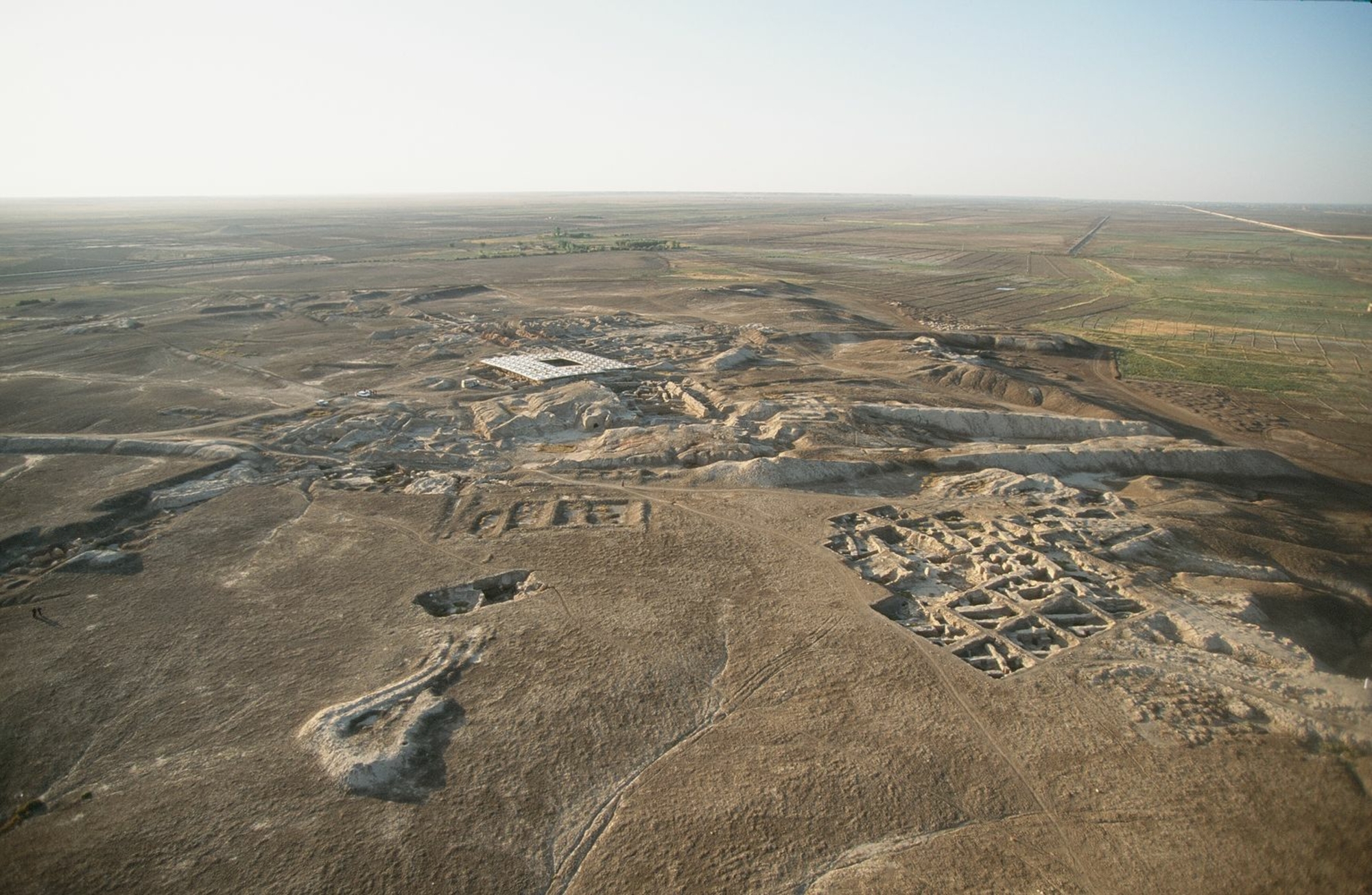
- Home
- Explore the site
- The history of Mari
- Urban stratigraphy
Mari has a long history. Three successive cities - Cities I to III - were built on top of each other on the banks of the Euphrates.
City I (circa 2900-2550 BCE)
The construction of City I was part of an exceptionally ambitious plan to found ex nihilo a new city in Syria’s Euphrates valley in order to control and benefit from trade on a major communication route – first by river and then by land – between Anatolia and southern Mesopotamia. Although we still know very little about this first city, one of the most ancient in the Near East, recent research suggests it was an active centre for copper and bronze craftsmanship and a trading hub.
City II (circa 2550-2300 BCE)
City II is the result of the complete reconstruction of the city. One of the great capitals of central Mesopotamia, it was in close contact and sometimes in conflict with Ebla, in the west, and Kish and Ur in the southeast. The extensive material remains discovered in its sanctuaries attest to its wealth and originality. Mari was then a large political metropolis, but also a major site for the production of metal such as copper and gold and a leading artistic centre. City II was probably destroyed by Sargon of Akkad around 2300 BCE.
City III (circa 2250-1760 BCE)
The city was gradually but extensively rebuilt as City III by the shakkanakkus, originally an Akkadian title borne by officials holding the position of governor. They established themselves as a powerful dynasty. We can use their foundation deposits to retrace the rebuilding of the city. Statues found in the palace ruins offer a glimpse of what they may have looked like. Mari then re-established its position as the northern capital.
Probably conquered by an Amorite tribe around 1830 BCE, Mari sought in vain to hold on to its dominant position before falling to the armies of Hammurabi of Babylon. After antiquity, the tell was occupied on occasion but used mainly as a cemetery. It was rediscovered in 1933.


